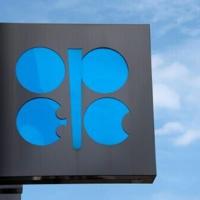Saudi Arabia, Russia and six other members of Opec+ on Sunday decided to raise their production quotas by 137,000 barrels per day in November, as they continue to push for greater market share.
“In view of a steady global economic outlook and current healthy market fundamentals, as reflected in the low oil inventories, the eight participating countries decided to implement a production adjustment of 137 thousand barrels per day” from October’s levels, the group said in a statement after an on-line meeting.
The increase was less than many analysts expected, with the cartel seeking to avoid pressuring prices amid weak demand.
“OPEC+8 stepped carefully after witnessing how nervous the market had become” in light of market rumours that production could be hiked by 500,000 barrels a day, said Jorge Leon, analyst at Rystad Energy.
“The group is walking a tightrope between maintaining stability and clawing back market share in a surplus environment,” he added.
In the past few months, Saudi Arabia, Russia, Iraq, the United Arab Emirates, Kuwait, Kazakhstan, Oman and Algeria have already raised their quotas by more than 2.5 million barrels a day.
Opec+’s priority at the start of the year was to maintain prices high by limiting supply, but it changed strategy starting in April and is now seeking to gain market share from other producers such as the United States, Brazil, Canada, Guyana and Argentina.
The production increases come as the International Energy Agency forecasts that oil demand will only increase by 700,000 barrels a day between 2025 and 2026.
OPEC, generally more optimistic in its reports, expects global oil demand to increase by 1.3 million barrels a day in 2025 and by another 1.4 million in 2026.
A barrel of Brent, the global benchmark for crude, was trading below $65 on Friday, down about 8 percent in one week, weighed down by fears of a significant production increase by the cartel.
Russia, the largest producer in the cartel after Saudi Arabia, depends on high prices to finance its war machine against Ukraine, but unlike Riyadh, has limited potential to increase production due to US and European pressure on its oil sector.
The increase decided Sunday is “manageable” for Russia, said Leon+.
Russia currently produces around 9.25 million barrels per day and has a maximum production capacity of 9.45 million compared to around 10 million before the war, Homayoun Falakshahi, an analyst at Kpler, told AFP.
Ukrainian strikes on Russian refineries have intensified since August, causing “an increase in Russian crude oil exports, as it cannot be used domestically,” making the country even more dependent on selling oil abroad, Arne Lohmann Rasmussen, an analyst at Global Risk Management, told AFP.
pml/oaa/gv/cw


